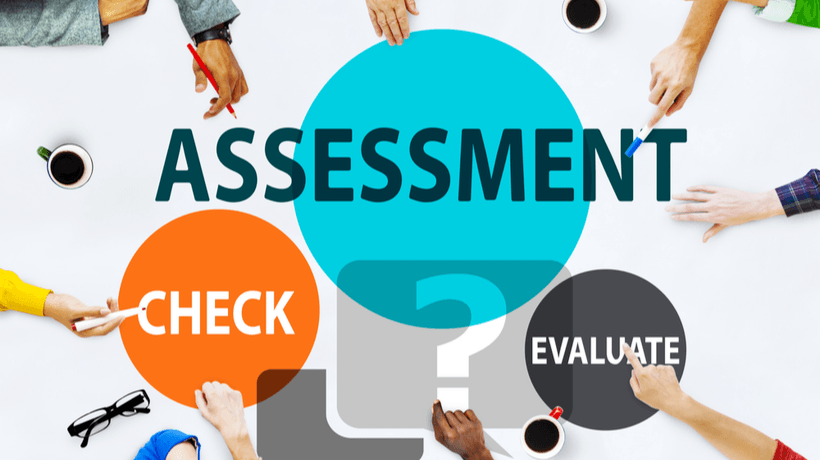Supporting The Entire Student Education Journey
Assessment is essential to teaching and learning with the potential to promote and provide insight into student learning, whatever the subject and wherever the student and educator. In the context of remote learning, assessment is a critical and asynchronous learning intersection, one that is fraught with the time-consuming nature of meaningful evaluation along with logistical and integrity concerns.
According to John Hattie, an education researcher best known for his work Visible Learning, which examines the nature of student learning, feedback has a profound influence on student learning. High-quality feedback has the potential to accelerate learning, increase the amount of learning, and is thus an effective conduit and strategy for improving student performance (Visible Learning, n.d.).
The importance of feedback within assessment (assignments and exams) has been measured and acknowledged across learning disciplines. Science, mathematics, and engineering are no exception to the rule; quality feedback has been shown to be a critical factor in student success.
Feedback on both assignments and exams should be given to help facilitate learning and to also fortify prior knowledge. In Mindful Learning: 101 Proven Strategies for Student and Teacher Success, educators Linda and Bruce Campbell state that “prior knowledge facilitates learning by creating mental hooks that serve to anchor instructional concepts (2003, p. 7) [1]."
Students who understand what they know and what they need to know in order to move forward are more likely to excel in their coursework. Because course concepts are largely interdependent, cumulative knowledge paired with formative feedback helps students absorb complex concepts and reasoning as they learn. The final stage, of course, being summative assessment, most often in the form of final exams or standardized tests. When students experience frequent, low-stakes formative feedback prior to summative assessment, then we have end-to-end assessment with integrity, where learning is connected to teaching throughout a student’s educational journey.
End-To-End Assessment
Effective end-to-end assessment enables educators to:
- Provide students with feedback to meet learning outcomes
- Understand student learning
- Build a model of student progress
- Inform planning decisions
- Inform curriculum and test design to meet learning needs
Effective end-to-end assessment is informed by the following questions:
- What are we trying to do?
- How well have we done it?
- How do we know what to learn?
- What do we do when we don’t know what to do?
This assessment intersection is critical in measuring student progress and understanding student learning as well as informing teaching efficacy and exam design. Within the context of online and remote learning, such transparency is critical.
In his timely article addressing online learning in the wake of the COVID-19 pandemic, Andrew Martin of the University of New South Wales states, “In an online environment it is harder to monitor students’ understanding, and there is significant risk that lessons are poorly organized and too much material is delivered too early—leaving learners lost”(2020, p. 1) [2]."
Additionally, “In a face-to-face classroom, the teacher can get a sense of when a learner is confused or going down the wrong path from simple observation of the body language of the learner or the actions that they are taking as they tackle assigned tasks. Online learning removes some of the channels of information that are available in a traditional classroom, so the teacher needs to rely more on channels like assessment of learning (Timms, 2017, p. 327) [3]."
In sum, assessment gives a glimpse into student learning, and it is a communication channel between students and teachers. This is especially the case for online learning. And upholding assessment with integrity, in other words, tests, quizzes, and assignments that accurately measure student learning, are critical to furthering student learning outcomes and teaching efficacy because they are intrinsically connected.
Furthermore, end-to-end assessment addresses the entire student workflow, the entire educational journey, from the inception of learning, through supportive formative assessment, to the final summative assessment. When combined, learners are more confident in their knowledge because they are prepared and experience the bridge between teaching and learning per Dylan Wiliam.
End-to-end assessment is not an endpoint rather but a junction within a process. When integrated thoughtfully into the entire course plan, summative assessments, like standardized exams or final exams for instance, when tests have been given throughout the course, are less stressful and act more as a check-in point. In essence, end-to-end assessment, when enacted with integrity, is a large feedback loop where each quiz and exam are feeding knowledge into what the instructor knows and is adjusting in their content. Similarly, students learn about what they know and don’t know with each quiz and exam and as long as those are transparent and provide feedback, drive learning.
So, How Can We Support End-To-End Assessment With Integrity?
Offering a variety of assessment formats upholds the inclusion of different learning styles and measuring different components of learning. Multiple-choice exams are often reviled, but can still be helpful to assess a large swath of concepts in a short amount of time. And, when in combination with other formats, are very effective. And short and long answer questions have been regarded as effective ways to test whether or not students have a deep conceptual understanding of subjects.
Assessment software can also enable timely and effective feedback loops, upholding all assessment formats, and support frequent low-stakes assessments, all while saving instructors time and offering data insights.
Item analysis, the practice of analyzing student responses to individual exam questions, can also provide further insight into student learning and future assessment design.
By offering explicit instruction on academic integrity and by modeling assessments that accurately measure learning and adhere to course objectives, educators can also help uphold academic integrity. Students not only receive direction on academic integrity, they understand that their exams test what they learn; integrity is then a core part of the student-educator relationship. Finally, by ensuring that final exams are not standalone but supported with prior feedback on frequent assessments, educators can increase student learning outcomes and ensure that such assessments are part of a learning process. Essentially, they transform assessments and grading into learning.
References:
[1] Beginning With What Students Know
[2] How to Optimize Online Learning in the Age of Coronavirus (COVID-19): A 5-Point Guide for Educators
[3] From Formative Assessment to Assessment for Learning: A Path to Success in Standards-Based Schools









